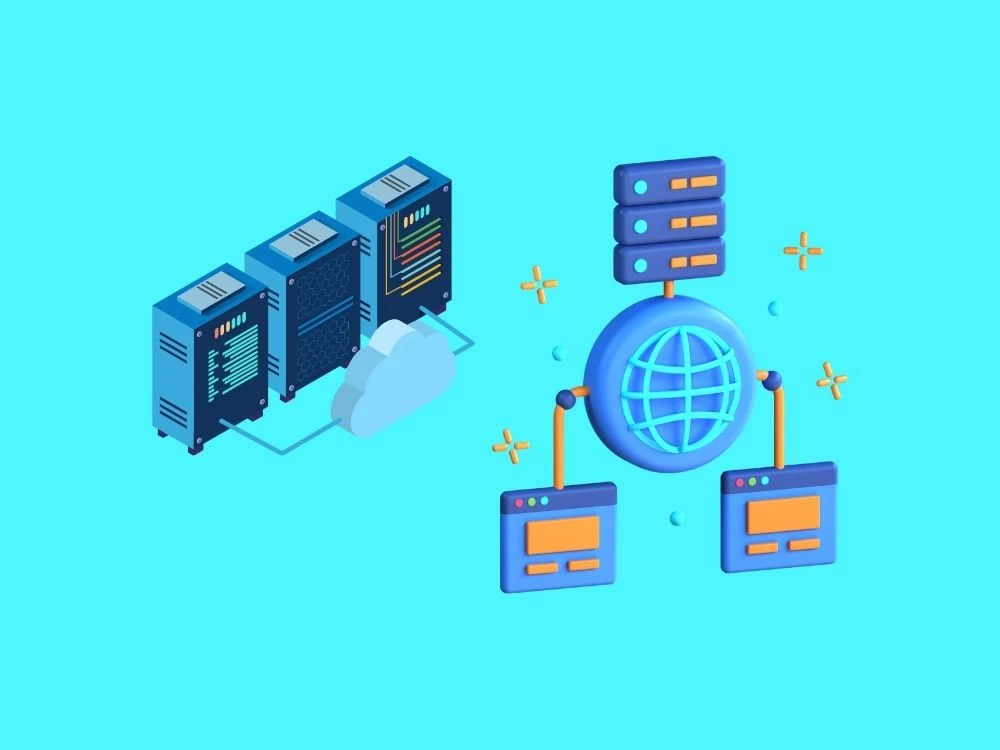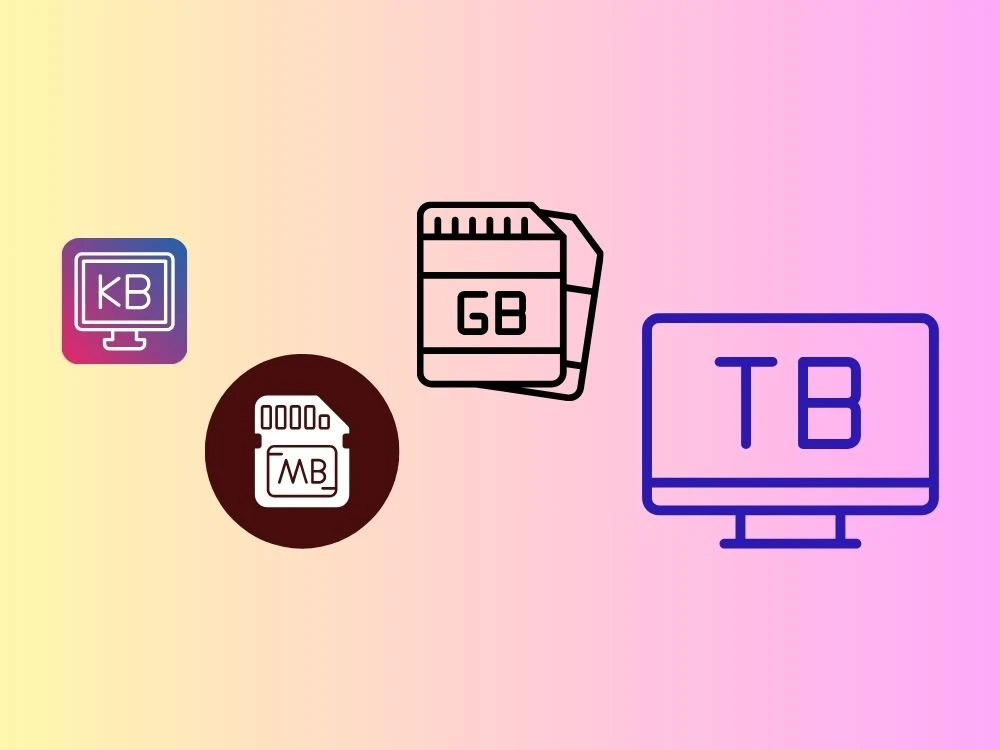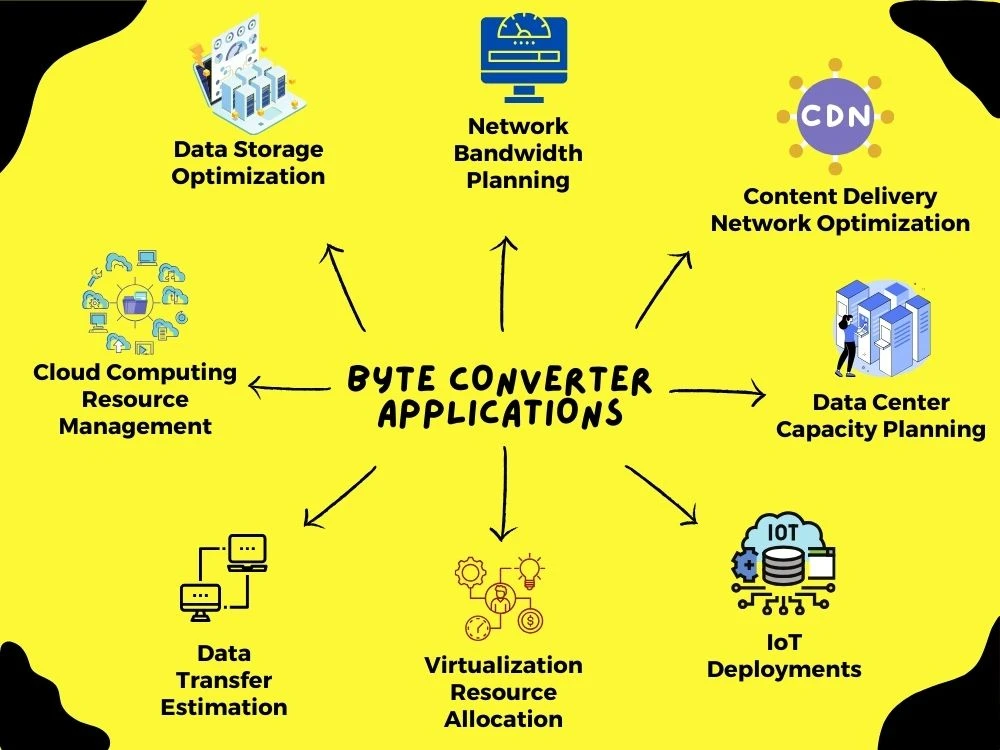
What is Digital Infrastructure? Exploring Byte Converter Applications
Technology determines many aspects, where the digital infrastructure makes it all happen. Think of it as a foundation that comprises networks, servers, software, and storage systems that keep information flowing smoothly.
Modern-day businesses can't stand without proper tech systems. Infrastructure needs to be reliable to do everything, including customer data storage and team collaboration. It's about having the right environment to ensure growth while facilitating daily operations.
Key Takeaways
- Understand Digital Infrastructure and Its Importance in Modern Business Operations.
- Understand What a Byte Converter Is and Its Significance in Digital Infrastructure.
- Identify the Applications of a Byte Converter in Digital Infrastructure.

What is Digital Infrastructure?
It simply contains the foundational technology and network systems, which include both hardware and software. It helps enable digital data processing, storage, and communication. Hardware components such as servers, storage devices, routers, and software applications and platforms facilitate data management.
The Importance of Digital Infrastructure in Modern Business Operations
Modern business organizations perform most of their operational tasks digitally. This makes digital infrastructure inevitable for smooth business operations. It functions as the backbone and assists in processing, storing, and communicating business data. Here are some precise advantages:
- Enables efficient data processing and storage in modern business.
- Facilitates effective communication and collaboration.
- Supports innovation and technological advancements.
- Enhances customer service and satisfaction.
- Enables scalability and flexibility in business operations.
What is a Byte Converter?

A byte/bit converter like the one we offer at Smart Tools AI is an online software tool. It helps convert different data measurement units like Bits, Bytes, Exabytes (EB), Exabits (Eb), Gigabytes (GB), Gigabits (Gb), Kilobytes (KB), Kilobits (Kb), Megabytes (MB), Megabits (Mb), Petabytes (PB), Petabits (Pb), Tera bytes (TB), and Terabits (Tb).
Anyone can use this online tool without restrictions. The tool is easy to use and doesn’t require ample technical knowledge. By using this tool, users can identify different data sizes swiftly and accurately.
Significance of Byte Conversion in Digital Infrastructure
Accurate data size calculation is important in digital infrastructure management. By using a byte converter tool, organizations or individuals can streamline their work related to digital data. Also, the tool plays a significant role in optimizing data storage, planning network bandwidth, managing cloud computing resources, and many other applications.
This precision in digital data calculation ensures efficient utilization of digital infrastructure resources. Moreover, accurate byte conversion leads to improved performance, scalability, cost-effectiveness, and many other benefits in modern business operations.
Applications of a Byte Converter in Digital Infrastructure

A byte converter tool has various applications. Using the tool creates a huge impact in streamlining the digital workflow of the organizations. Let’s see how:
01. Data Storage Optimization
A Byte converter helps accurately assess and optimize the data storage requirements of an organization. It converts between different units of measurement and ensures efficient utilization of storage resources.
For example, an organization wants to calculate Gigabytes for their storage requirement assessment. The vendors offer storage solutions in Terabytes (TB). Using a byte converter, the organization can easily convert the offered storage capacity from Terabytes to Gigabytes. If the vendor offers 5 Terabytes of storage, the organization can convert this to Gigabytes using the byte converter.
5 Terabytes * 1024 Gigabytes/Terabyte = 5120 Gigabytes
02. Network Bandwidth Planning
The byte converter assists in planning and optimizing network bandwidth for efficient data transmission. It's useful to convert data transfer rates in bits per second (bps), kilobits per second (Kbps), megabits per second (Mbps), and Gigabits per second (Gbps).
For example, a company wants to estimate its network bandwidth for data transfer needs. It requires calculating the network bandwidth in Gbps, but the internet service provider offers packages in Mbps. Here, the company uses the byte converter to assess Mbps to Gbps. Assume the internet service provider offers a 500 Mbps package:
500 Mbps * 0.001 Gbps per Mbps = 0.488 Gbps or 0.5 Gbps.
03. Cloud Computing Resource Management
A Byte converter facilitates the estimation and conversion of cloud storage capacities and data transfer rates. This enables organizations to effectively manage and allocate resources in cloud environments.
For example, an organization can easily manage and allocate cloud storage resources by converting data storage from one unit to another. For instance, from Petabytes to Exabytes. This also helps optimize resource utilization in cloud computing environments. It's converting 1 petabyte (PB) of data storage to exabytes (EB).
1 PB = 0.001 EB (1 PB * 0.001)
04. Data Transfer Estimation
Organizations can use this tool to evaluate data transfer speeds and requirements for various data transfer operations. This ensures smooth and efficient data exchange between systems and networks.
For example, firms need to ensure efficient data exchange. For this purpose, they convert data transfer from one unit to another. Converting 10 gigabytes (GB) of data transfer to megabits per second (Mbps).
10 GB = 81,920 Mbps (10 GB * 8,192 Mbps/GB)
05. Virtualization Resource Allocation
Byte converters assist in converting between different units of memory and storage capacities. This is crucial for organizations to correctly allocate resources in virtualized environments such as virtual machines and containers.
For example, a company utilizes the tool to convert 4 gigabytes (GB) of memory allocation to megabytes (MB). This helps the company accurately allocate resources in virtualized environments and enhance the performance of virtual machines and containers.
4 GB = 4,096 MB (4 * 1,024 MB)
06. IoT Deployments
The byte converter tool helps in accurately estimating and converting data sizes and transfer rates generated by IoT (Internet of Things) devices. It aids in facilitating efficient data management and communication in IoT ecosystems.
For example, by converting 1 terabyte (TB) of data generated by IoT devices to gigabytes (GB), a company can effectively manage and analyze IoT data. Also, this will enable efficient communication and decision-making in IoT deployments.
1 TB = 1,024 GB (1 * 1,024 GB)
07. Data Center Capacity Planning
The tool is important for data center capacity planning, which enables organizations to accurately estimate storage capacities, network bandwidth requirements, and data transfer speeds. This ensures optimal performance and scalability of digital infrastructure.
For example, a company can plan and optimize data center capacity by converting 10 petabytes (PB) of data storage capacity to terabytes (TB). This ensures the scalability and performance of the data center infrastructure.
10 PB = 10,240 TB (10 * 1,024 TB)
08. Content Delivery Network Optimization
Byte converters are also helpful in optimizing content delivery networks (CDNs). They assist in converting data transfer rates and file sizes, which facilitate efficient content caching, distribution, and delivery to end-users.
For example, an organization can optimize content delivery networks (CDNs) by converting 1 gigabit per second (Gbps) of data transfer rate to megabytes per second (MB/sec). This helps enhance the efficiency of content caching, distribution, and delivery to end-users. We need to consider that 1 byte equals 8 bits. Therefore, the conversion factor is:
1 Gbps = 125 MB/sec (1 * 125 MB/sec)
Case Study Example
The following case study example interprets the importance of utilizing a byte converter tool in digital infrastructure:
Company Name: VIG Tech Solutions
Aim:
VIG Tech Solutions is a leading technology services provider in the USA. It aimed to optimize its data storage infrastructure to support its growing client base and expanding portfolio of digital services. The company recognized the essentiality of assessing its storage requirements to ensure efficient utilization of resources and cost-effectiveness.
Solutions:
To fulfill this purpose, VIG Tech Solutions integrated the online byte converter as part of its digital infrastructure management strategy. The company could able to leverage the byte converter to convert storage capacities between different units like gigabytes (GB) and terabytes (TB). This method enabled the company to estimate its storage needs and make informed decisions regarding storage allocation and provisioning.
Result:
VIG Tech Solutions achieved significant success in optimizing its data storage infrastructure. The company accurately forecasted its storage requirements by using the byte converter tool. Also, it prevented inefficient provisions of storage resources.
As a result, VIG Tech Solutions got a major benefit of cost savings by avoiding unnecessary expenditures on excess storage capacity. Additionally, the streamlined storage management process enhanced the company's ability to scale its operations and effectively support its growing client base and expanding portfolio of digital services.
Wrapping Up
Understanding the digital infrastructure is crucial for smooth business operations. Modern business firms go digital, and all their digital data processing, storage, and communication tasks are effectively handled by ensuring the finest digital infrastructure management.
The byte converter tool is a great assistant to plan and optimize digital infrastructure. It plays an important role in various applications such as data storage optimization, network bandwidth planning, IoT deployments, cloud computing resource management, and many more.
Explore Related Posts
https://smarttoolsai.com/post/how-to-transfer-files-from-pc-to-pc
https://smarttoolsai.com/post/5-ways-to-share-files-with-your-team-while-working-from-home
.webp)